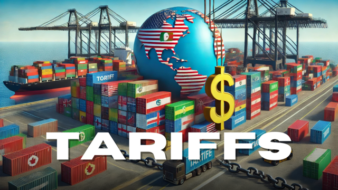Brian Fenske offers his thoughts to an article we posted:
How are you venting? PVC Flues Are They Safe?
More often than not the 140 degree Fahrenheit limit for Sch 40 DWV in misinterp reted and misused. The 140 degree limit is in fluid piping situations with pressure. The charts, if I recall, are 20 PSI for the 140 degree temperature limit. Last time I checked, flues don’t see a fluid pressure, and the vent pressures are well under 1 PSI. Schedule 40 PVC has a upper temp limit of 149 degrees Fahrenheit, with degradation beginning to occur at 158 degrees Fahrenheit. This would be the reason for the Canadian ULC-S636 standard of 149 degrees F/65 C. They know and understand the true material temperature limit. I agree that the PVC manufacturers don’t list the application or temperature limits of PVC pipe for venting, but why should they? Where’s the listing for 26 gauge stove pipe to be found?
reted and misused. The 140 degree limit is in fluid piping situations with pressure. The charts, if I recall, are 20 PSI for the 140 degree temperature limit. Last time I checked, flues don’t see a fluid pressure, and the vent pressures are well under 1 PSI. Schedule 40 PVC has a upper temp limit of 149 degrees Fahrenheit, with degradation beginning to occur at 158 degrees Fahrenheit. This would be the reason for the Canadian ULC-S636 standard of 149 degrees F/65 C. They know and understand the true material temperature limit. I agree that the PVC manufacturers don’t list the application or temperature limits of PVC pipe for venting, but why should they? Where’s the listing for 26 gauge stove pipe to be found?

Way more people have died from rotted, rusted, sagging, inappropriately installed single wall sheet metal chimneys and appliance connectors than any other vent material, where is that call to action to ban?
Since UL (Underwriters Laboratory) doesn’t test or list products for venting, it would be wrong to say PVC pipe should be listed by UL.
“UL certified gas-fired appliances and venting systems for these products are intended for installation in accordance with the following installation codes:
• ANSI Z223.1/NFPA 54 National Fuel Gas Code
• International Fuel Gas Code
• International Residential Code
• Uniform Mechanical Code.
These codes include requirements intended to minimize the hazards associated with high temperatures and combustion gases. In general, factory built vents and chimneys are required to be listed (certified), except for instances where limited use of metal chimneys and vents are specifically allowed. In general, US codes permit Category IV gas-fired appliances to be vented using unlisted plastic vents where such vents are tested and covered under the specific appliance listing. These vents are intended to be installed in accordance with the appliance manufacturer’s installation instructions.”
PVC venting and all required or approved vent material are however tested and approved by CSA. CSA exceeds the UL standards with specialization with gas fired equipment (UL does not)
ANSI Standards, does address PVC venting also meets their requirements under exact conditions –
How Appliances are Certified:
Gas fired boilers and water heaters are required to be safety certified by a third party testing agency according to the American National Standards/CSA Standards. Boilers are design certified to ANSI Z21.13/CSA 4.9 and commercial water heaters are design certified to ANSI Z21.10.3/CSA 4.3. As a part of this certification, the appliance must undergo tests to assure the specified venting system is appropriate for use with the appliance. Each standard includes specific test procedures for Non-metallic venting like PVC/CPVC. The appliance is placed in a closet and the water temperatures are raised to the highest permissible level. This generates the highest flue gas temperatures. Under these conditions, data is collected to verify the vent material’s temperature limitations are not exceeded. The vent tests measure the actual pipe material temperature, not the flue gas temperature to determine the effect of hot flue gases on the vent material. ANSI test procedures are under constant review by the ANSI standards committees to assure the test conditions are appropriate and up to date.
CSA also knows and understands the true upper safe temperature limit of all plastic vent materials and test the appliances under the different operating conditions to these plastic temperature limits.
I am not saying PVC pipe is OK for all applications, but if we can, as an industry, follow the installation instructions, installing the correct material for the application, in a proper manner, we wouldn’t need to use a few instances that were wrong to build a case against a product that makes sense to use.
Brian Fenske is specialty channel sales manager and national training manager for Navien America, Inc.




Join the conversation: